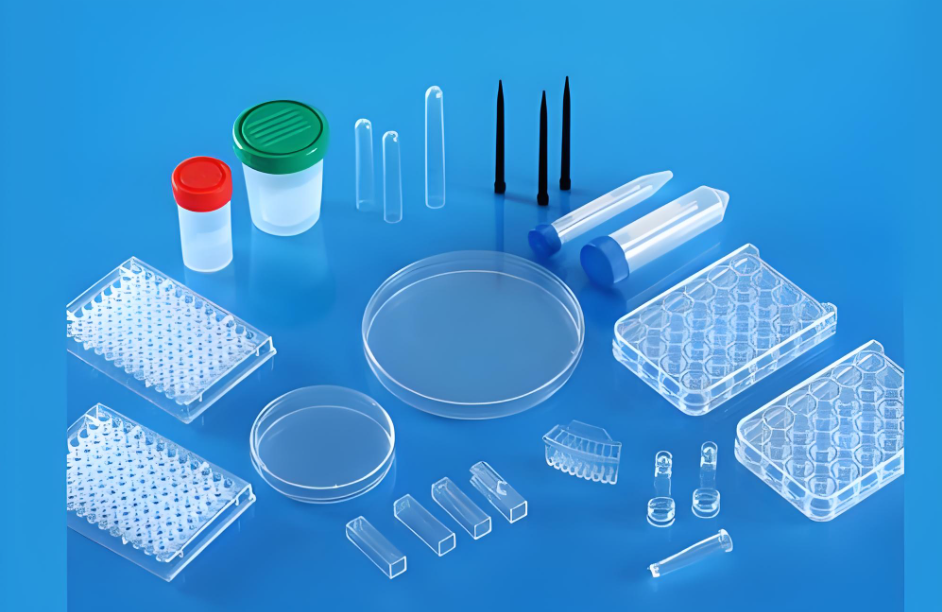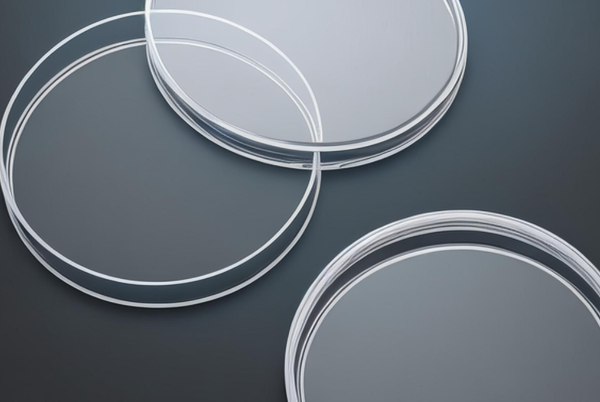Views: 0 Author: Site Editor Publish Time: 2025-11-07 Origin: Site











In medical manufacturing, precision, cleanliness, and efficiency are non-negotiable. Injection molding has become a cornerstone technology for producing plastic medical components, meeting the healthcare sector's strict demands for quality, volume, and cost-effectiveness. The process allows for the mass production of complex, tight-tolerance parts that are both durable and easily sterilized.
However, not every medical product is a perfect fit for this manufacturing method. This guide explores the specific categories of medical products best suited for injection molding, providing examples and key considerations to help you determine if your device is a prime candidate. By understanding which applications benefit most, you can optimize your design, streamline production, and bring safe, reliable products to market faster.
Injection molding is a versatile process used across a wide range of medical applications. From simple disposables to complex diagnostic housings, the technology offers a reliable path to mass production. Here are 12 product categories where injection molding truly excels.

Examples: Syringes, IV connectors, catheter hubs, luer locks, needle caps.
Disposable devices are the workhorses of modern healthcare, and injection molding is the engine that produces them. These products require extremely tight tolerances to ensure proper function, smooth surfaces to minimize patient trauma, and low unit costs to be viable for single-use applications. Injection molding delivers on all fronts, enabling high-volume production with exceptional consistency. Other benefits include options for color-coding to prevent user error and clear traceability for regulatory compliance.
Examples: Forceps, clamps, trocar handles, scalpel housings, retractors.
For both single-use and reusable surgical tools, injection molding offers significant advantages over traditional metal fabrication. It allows for the creation of ergonomic, lightweight handles that reduce surgeon fatigue. Complex features like grip textures can be molded directly into the part, eliminating secondary processing steps. For reusable instruments, specialized medical-grade polymers can be selected that withstand harsh sterilization methods like autoclaving, Ethylene Oxide (ETO), and gamma radiation.
Examples: Insulin pens, inhalers, auto-injectors, nebulizer components.
Precision is paramount in drug delivery systems, where accurate dosing can be a matter of life and death. Injection molding creates the intricate internal geometries needed for precise metering and reliable mechanical function. Features like multi-component snap-fits for assembly, child-resistant locks, and tamper-evident seals can be integrated directly into the design, enhancing both safety and functionality.
Examples: Point-of-care (POCT) testing cassettes, lateral-flow test housings, and diagnostic reader enclosures.
The accuracy of diagnostic devices often depends on the precise alignment of internal components. Injection molding produces dimensionally stable housings that protect sensitive electronics and optics. It can also create micro-features like fluidic channels for test cartridges or crystal-clear optical windows for sensor readings. Maintaining low-particulate surfaces during production is crucial to prevent contamination and ensure reliable test results.
Examples: Pipette tips, microplates, PCR tubes, Petri dishes, cryovials.
Labs run on high volumes of disposable consumables, making injection molding the only practical manufacturing solution. The process ensures incredible cavity-to-cavity accuracy, which is critical for the consistency of experimental results. Thin-wall molding techniques are often used to produce lightweight parts like pipette tips and microplates, reducing material costs and cycle times. Parts are also designed for compatibility with automated handling systems common in modern labs.

Examples: Stopcocks, Y-connectors, manifolds, check valves, drip chambers.
Components used to manage and direct fluids must provide secure, leak-tight connections. Injection molding can produce parts with smooth internal channels that reduce turbulence and the risk of contamination. Transparent materials are often used for components like drip chambers, allowing for visual monitoring of fluid flow. Integrated seals and valve seats can also be molded into a single part, simplifying assembly and improving reliability.
Examples: Trial spacers for joint replacement, surgical guides, positioning blocks, and instrument inserts.
While not permanent implants themselves, these components play a critical role during surgical procedures. They must have complex shapes and repeatable tolerances to assist the surgeon accurately. Injection molding produces these parts more cost-effectively than machining, especially for intricate geometries. The materials used must be biocompatible and compatible with validated sterilization routes to ensure they are safe for use in the operating room.
Examples: Biosensor housings, adhesive patch frames, monitoring wristbands, and clips.
Wearable medical devices require enclosures that are comfortable for continuous skin contact, durable enough for daily use, and aesthetically pleasing. Injection molding, particularly with overmolding techniques, can create soft-touch surfaces and flexible components. The process also allows for impact-resistant housings with integrated features like battery doors and snap-fits for easy servicing. Materials are chosen for their resistance to sweat and UV light.
Examples: Anesthesia masks, circuit elbows, flow sensors, humidifier chambers.
Respiratory components often have complex curved surfaces to ensure a comfortable and effective seal. Injection molding is ideal for producing these shapes consistently. Clear plastics are frequently used so clinicians can visually check for condensation or blockages. Integrated ports and connectors are molded in to ensure reliable connections to tubing and other equipment. Biocompatible seals and materials that mitigate fogging are also key considerations.
Examples: Dressing applicators, antiseptic dispensers, sanitary closures, and needle shield covers.
For wound care, single-use applicators and dispensers must be hygienic and easy to operate. Injection molding allows for user-friendly designs with textured surfaces for better grip and tamper-evident features to ensure sterility. These products are designed to provide a reliable contamination barrier and enable consistent, controlled application of treatments.
Examples: Bed control bezels, IV pole hooks, equipment rail caps, and cable organizers.
Even everyday hospital hardware benefits from injection molding. These parts need to be durable, easy to clean, and resistant to harsh chemical disinfectants. Injection molding can produce these items in high volumes and allows for color-matching to align with hospital branding or to differentiate equipment by ward or function. Designs typically feature rounded corners for patient and staff safety.
Examples: Vial caps, plastic stoppers and liners, dosing cups, and sterile trays.
High-speed injection molding is perfectly suited for producing pharmaceutical packaging components where seal integrity is critical. Tight dimensional control ensures that caps and closures provide a secure, contaminant-proof seal. The materials must be evaluated for extractables and leachables and be fully compatible with the product’s required sterilization method.
Use this quick checklist to see if your medical device aligns with the strengths of injection molding:
Volume: Are you planning for medium to very high production volumes?
Geometry: Does your design require precision, thin walls, repeatable snap-fits, or living hinges?
Materials: Are you using medical-grade thermoplastics or elastomers with a clear sterilization path?
Compliance: Can your design be produced in a cleanroom environment and documented to meet ISO 13485 standards?
Lifecycle: Is the product disposable, or is it a reusable device with a validated reprocessing method?
If you answered yes to most of these questions, injection molding is likely the ideal manufacturing path for your product.
Q1. Are low-volume specialty devices suitable for injection molding?
Yes, especially if the design is stable and future scaling is anticipated. Bridge tooling or rapid aluminum molds can be used to produce parts in lower volumes, helping to de-risk the initial stages before investing in high-cavitation steel production molds.
Q2. Which products benefit most from clear plastics?
Diagnostic housings, fluid management parts like drip chambers, and respiratory components all benefit from transparency. It allows clinicians to visually confirm fluid flow, check for blockages, or verify sensor alignment.
Q3. Can overmolding improve usability?
Absolutely. Overmolding a soft-touch thermoplastic elastomer (TPE) onto a rigid substrate can create ergonomic grips for surgical instruments or comfortable, non-slip surfaces for wearable devices. It can also be used to create built-in seals or add color accents for branding or instructional purposes.
Q4. What if a device needs very fine features?
Specialized processes like micro-molding are capable of producing extremely small and detailed features. This technology can create parts with micro-channels for fluidics, sharp-edged components for cutting applications, or precise metering features for drug delivery systems, all with high repeatability.
Q5. How do I confirm sterility compatibility?
Sterilization compatibility should be planned from the earliest stages of material selection. Common methods include Ethylene Oxide (ETO), gamma radiation, e-beam, and steam autoclaving. It is essential to run validation tests on the final molded part using the intended material to ensure it maintains its integrity and performance after sterilization.
Products that demand precision, cleanliness, and scale are prime candidates for medical injection molding. Using this guide to identify where your device fits can help you map out a clear path to production, ensuring your product is manufactured safely, compliantly, and efficiently.
At GUANGCHAO, we specialize in medical injection molding solutions that meet the highest standards of precision, biocompatibility, and regulatory compliance. From disposable consumables to complex drug delivery systems, our team delivers end-to-end support—from mold design and tooling to cleanroom manufacturing and final validation. Partner with us to bring your next medical innovation to life with confidence and reliability.
